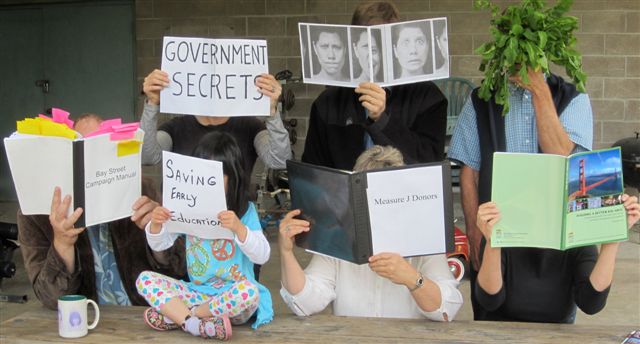We had a chance last year to significantly change the composition of the City Council, when 3 of the members were up for re-election. Why Emeryville residents did not do so is a mystery to me. I support any effort to make our council more accountable to the people who live here – not just the people who build here.
K.H.
_______________________________
Open Letter to the Emeryville City Council
I would like to voice my protest of the apparently inevitable issuance of a demolition permit that would allow the destruction of the historic buildings at the corner of 39th and Adeline as well Powell and Doyle.
Emeryville has a wonderful stock of older buildings that could be parleyed into a successful marketing approach to attract potential residents, tourists, and businesses. The apparent over-willingness of the city government to destroy the unique cultural resources which separate Emeryville from surrounding communities only serves to diminish the future potential for economic growth in the city. The potential for growth in Emeryville, as elsewhere, will lie in differentiating itself from other communities, as shoppers, businesses, and families decide where they want to spend their time and money.
Emeryville needs only to package their heritage resources properly to take advantage of the enormous opportunity it possesses to tap into the niche-appeal of unique communities. I encourage you to peruse the National Trust’s Main Street Program website at http://www.mainstreet.org/ to see what so many other communities have accomplished by using the “Main Street Approach.†This is a program begun by the National Trust over 30 years ago. It has been incredibly successful, benefiting cities both small and large across the country by showing them approaches to set themselves apart from other cities by highlighting their cultural and architectural uniqueness and desirability, and combining it all into a marketable package. This can lead to enormous economic opportunities using many resources that the city already has, along with opening up state and federal grants to rehabilitate and rejuvenate historic neighborhoods, as well as individual buildings. Emeryville has used a similar approach in the past by taking advantage of Brownfields grants to bring many contaminated parts of the city back to useful operation. Emeryville can do the same thing with the Main Street Program to improve its other residential and commercial districts. This is especially important during these trying economic times.
I would direct you to Pleasanton, Berkeley, and Livermore as some examples that illustrate the success of this program. All of these cities are participants in this program and have benefited greatly. The Book, “Main Street Success Stories†has more details on how many cities around the country have very successfully utilized this approach in both good and bad economic times: https://www.mainstreet.org/content.aspx?page=4327.
Thank you.
Douglas Bright
Environmental Planner (Architectural History)


These are wonderful sentiments but they crash headlong into the pro development city council. Nice try however…I liked the ‘ultimately this is better for business’ angle of your letter. Too bad the council is too blind to see anything as complex as this. Remember, Emeryville isn’t like other Bay Area cities.
Mr Bright does’nt get the simple equation of Emeryville politics: The council majority is in reaction to what they see as a Berkeley ethos and are at their core, pro development. The developers, for their part donate extravegantly to the politician’s re-elction campaigns, further cementing the cozy relationship. It’s a perfect symbiosis.
The Secret News would appear to be an emerging spoiler to this dark affair.
I say let’s continue on with the demolishing binge!! Let’s tear down the Watergate Market and the Townhouse and build wonderful, new high density condos there.
Let’s level the whole god damn town and start fresh.
Douglas,
While I share your value of historic preservation, the Main Street program is not appropriate in this case. The Main Street program is designed for “traditional business districts.” The only areas in Emeryville which fit this mold are the San Pablo corridor and perhaps the Hollis corridor. I would have liked to see facades of the 39th/Adeline building preserved as was done with the Doyle/Powell building, but I also realize that this site has many more constraints (e.g. multiple jurisdictions, the size and shape of the parcel, etc.) Maybe the City should develop a facade preservation program. I don’t know where the funds would come from, but you seem to be familiar with these types of programs; maybe you can suggest something.
Sorry people, I think the preservation ship has sailed. Not too many buildings left to preserve. I think we ought to instead try for livability…might not be too late for that in Emeryville. First step? Regime change!
Bukowski will be easy to take out. Davis and Kassis will be a little harder but nothing good comes easy. Let’s ship ’em out!
Out with Bukowski, Dick KassIS, Davis, and Atkin! Time for freshness!
Regarding the comment about facade preservation:
The most common way to accomplish this would be through a preservation easement. This is where the owner of the property gives up the right to alter the historic elements of their building (this could mean everything on their property, or just a portion of it, like a facade) in exchange for a reduction in their property tax. Internal Revenue Service Code Section 170(h) and Department of Treasury Regulations Section 1.170A-14 provide for income and estate deductions for charitable contributions of partial interests in historic property (principally easements). Valuations usually range from 10-15% of the structure’s fair market value.
Many non-profit organizations offer this incentive (American Easement Foundation and Preservation Easement Trust are two organizations). The National Trust has a webpage devoted to the topic at http://www.preservationnation.org/resources/legal-resources/easements/
Governments can also offer these kinds of easements. Emeryville can and should participate.
Other kinds of incentives are:
The Mills Act (http://ohp.parks.ca.gov/?page_id=21412)
Transfer of Development Rights Programs (http://www.realtor.org/library/library/fg804)
Federal Tax Credits (http://www.nps.gov/history/hps/tps/tax/index.htm)